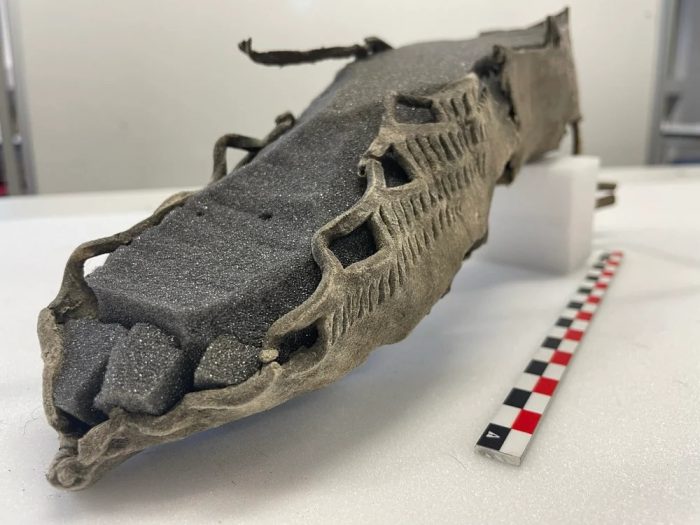Have you ever lost a shoe and couldn't find it for a few weeks? Most of us have at one time or another.
But how about several centuries?
Recently, a team of archeologists in Norway called Secrets of the Ice (who we've written about before) have been analyzing an amazing find. A 1,700-year-old sandal!
It was found by a hiker who was going through a mountain passage called Horse Ice Patch in August 2019.
Wow! ? Got this photo from a mountain hiker.
Yesterday, we surveyed the find spot and collected the leather object, together with textile and horse dung melting out of the ice. Looks like another mountain pass ❤️
Not sure what the object is. A shoe? #glacialarchaeology pic.twitter.com/a54nWRn6sx— Secrets Of The Ice (@brearkeologi) September 3, 2019
After being contacted, Secrets of the Ice's lead researcher Espen Finstad and his team immediately went out and collected the sample. And what they found gave them deeper insights into how this region was used nearly 2,000 years ago.
A common route
Today, Horse Ice Patch is a remote area. But according to Finstad, finds like this sandal—as well as various textiles and other artifacts found there—prove that this was a route used often by people.
"It tells us that what today looks like a wild and desolate mountain landscape has been a prehistoric traffic landscape, and that it is full of traces of humans," he told LiveScience.
He guessed that in the case of this sandal, it was likely just tossed aside after it became damaged. But that's the cool thing about archeology. After thouands of years, one person's junk really does become another person's treasure!
Roman trends
At the time that this shoe was worn, the Roman Empire was still the greatest power in the world. It influenced culture far and wide, including fashion. Which is why we're finding a Roman-style sandal in the middle of the Norwegian mountains!
In an interview with Science Norway, Finstad said, "It’s easy to joke about a Roman tourist who didn’t quite understand much about the country he was visiting."
But in truth, this was likely worn by someone from the region who had been exposed to culture from other parts of Europe. And according to the experts, the sandal would've been worn with additional layers to protect against the cold.
Check out the tweet below to see an expert's reconstruction of what the sandal would've looked like in its prime.
Afterwards I made an attempt at a reconstruction. I finally got this tested out today on some scrap leather (the original from rawhide). It's in the same size as the original. My foot is a european size 43, thus with wool wrappings/socks it would probably fit a size 42.
2/4 pic.twitter.com/wKda0iRYzG— Vegard Vike (@VegardVike) July 4, 2021
Pretty cool. And as much as we can't imagine hiking through a snowy mountain passage in those particular sandals, it was a different time—and the idea of fashion travelling from place to place is really interesting! What other cool artifacts do you think might be hidden in this Norwegian passage?
 "Oh wait. On second thought, I don't need my shoe back after all..." (Secrets of the Ice/Espen Finstad)
"Oh wait. On second thought, I don't need my shoe back after all..." (Secrets of the Ice/Espen Finstad)









